All Editorials
Femme-Metal: An Evolutionary Process
Femme-Metal: An Evolutionary Process

Femme-metal, like any other form of music, has undergone an evolutionary process; it didn’t just appear in its current form from day one. There is even some difficulty in tracing the roots of femme-metal, and there is some ambiguity as to who the first artists were that set down the groundwork for what would ultimately become femme-metal. Unlike Black Sabbath, the undisputed forefathers of heavy metal, femme-metal’s originators are not as easy to pinpoint. For one, it depends how far back in rock history one wants to go. For another, women in rock and heavy metal music have always had to fight for acceptance and respect; therefore it is more difficult to place where certain aspects of various genres began, considering that there were artists before who had to strive for their place in the rock hierarchy, leaving a lot of “unsung heroes” in their wake.
Obviously the first female performers in rock music go back as far as the “girl groups” of the 1950s and ‘60s, during the early years of rock ‘n’ roll. But those early groups (such as The Ronettes, The Supremes, The Marvelettes, and so on) sang predominantly about safe topics such as teenage puppy love and high school heartbreak. This is about as far removed from “femme-metal” as one can get; so where does one find the bridge between those dulcet-toned good girls in poodle skirts, to the brutally honest tough chicks in black leather?
As one might expect, the probable beginnings of femme-metal could be traced to one of the aforementioned “unsung heroes”; an artist or group who is not exactly burned into the collective memory of the mainstream consciousness, which further hammers home the point that being a woman in rock and heavy metal has become synonymous with uncompromising struggle for recognition and equality on a playing field that is customarily ruled by men. Because one can only speculate where the first seedlings of femme-metal might have been planted, since no concrete “founder” of the genre has ever really been named, a good argument could be made for Goldie and the Gingerbreads; a group fronted by Genaya Raven in the early 1960s (even her name sounds metal!). Granted, the sound was not classified as “metal”, considering the term would not yet be coined for about another decade; but clearly Genaya adopted a heavier sound through the end of the decade with her next band, Ten Wheel Drive.
In fact, it is perhaps during the latter half of the ‘60s where most music fans will likely recognize the roots of femme-metal starting to peek through. It was at this time when women were making just as much an impact on the music scene as men. Janis Joplin and Jefferson Airplane’s Grace Slick are undoubtedly the first that come to mind: the heavier music, grittier style of singing, and straightforward lyrics are all the trademarks of femme-metal. These were not women like the doo-wop groups of the ‘50s that sang about holding hands with the cute boy at the malt shop. Nor were they the folksy women of their decade (such as Joni Mitchell or Joan Baez) who sang about peace and love. These were women who weren’t afraid to sing about social issues of the time, drug experimentation, or the real-life experiences of love and rejection; which wasn’t always pretty. They were not women who cared to be delicate flowers of womanhood; they were proud of their strength and weren’t afraid to get up on stage, let it all out, and allow their audience to see and hear them as they really were. They were determined to show that they were just as capable of making an impact with their music as much as any man.

However, in the ‘70s, some artists chose to convey this same attitude while decidedly maintaining a more feminine approach; singer-songwriters such as Carole King and Carly Simon. They showed that a female rocker could be bold and strong, but also still be sensitive. The singer-songwriters of the early ‘70s might also be considered a part of the femme-metal evolution; many of the femme-metal bands who have adopted a more folk/acoustic could plausibly find their roots as far back as these artists.
That is not to say that women stopped rocking in the ‘70s; quite the opposite, as there was an influx of female rockers inspired by Janis, now all grown up and ready to front their own bands. The most recognizable of the ‘70s frontwomen that prompts an instant connection to the beginnings of femme-metal is likely Fleetwood Mac’s charismatic vocalist Stevie Nicks; whose soulful voice and onstage image of long, flowing dresses can undeniably be named as a predecessor to the ornate gowns and elegant robes favored by so many femme-metal vocalists today. Nicks’ “witchy and enigmatic” onstage persona certainly could be cited as a direct precursor to the gothic imagery embraced by so many frontwomen on the metal scene that it has practically become a staple. Upon joining Fleetwood Mac with her musical and then-personal partner, Lindsey Buckingham, the two brought a dynamic to the table that brought the new lineup instant success; however, as their affair unraveled in real life, the music took a direction that could be said to have a direct hand in bringing about an important component in the femme-metal evolution: the “dueling” male/female vocals. Through the music, the couple played out their personal estrangement with songs that delved into the complexity of relationships between men and women. For the first time, listeners were hearing the perspective of love gone sour from both parties at the same time; in essence, hearing the desperation and anguish of a breakup in song, almost like an opera production. Though many of the newer femme-metal bands may not even cite Fleetwood Mac or Stevie Nicks as a personal influence, there is no denying that her onstage chemistry with Buckingham set the foundation for the vocal styling that would be known as “beauty and the beast” in the femme-metal genre; the back-and-forth conflict between harsh male vocals and seductive female vocals. Between Nicks’ visual image onstage and her songwriting style, these are two key elements that would become a large part of what femme-metal is known for today.

Another female rock vocalist that many on the femme-metal scene name as an influence, and therefore could legitimately be credited as a forerunner of the genre, is Heart’s Ann Wilson. Along with her sister Nancy, Heart was the first commercially successful rock band where women not only sang the songs, but wrote them as well. It should also be stated here that they were the very first band from their hometown of Seattle to ever be signed to a major record label. That’s saying a lot, considering what a music scene the city has had! Although the rest of the band have been males, the Wilson sisters have been the “heart of Heart” from the beginning; steering their own ship and taking complete control of their creative direction (which was no small feat back then!). It was not an easy climb uphill; as Ann and Nancy also struggled to be taken seriously, constantly fighting off the slings and arrows of nasty rumors and harsh criticism; something that the femme-metal bands know all too well and have drawn inspiration from. While these are all huge breakthroughs in and of itself for the evolution of femme-metal, it is Ann’s voice that is the “it factor” as far as being a huge influence on the genre. Ann’s ability to wear her emotions on her sleeve while hitting notes that can only be described as out-of-this-world; that is a feature that femme-metal has built itself around, and therefore it is not too much out of left-field to say that the Wilson sisters play a huge role in what would ultimately become femme-metal.
As the ‘70s pressed on, women were making headway in the world of rock music. Even the male-dominated progressive rock genre found a queen in Annie Halsam, frontwoman of the English prog-rock band Renaissance; whose medieval folk style coupled with Annie’s delicate yet powerful vocal delivery could easily be considered an early ancestor of bands such as Within Temptation. Punk rock also saw its share of feminist icons such as Patti Smith or Debbie Harry of Blondie; the latter of whom has been credited as the first rock vocalist to incorporate rap into the music, which was not only ground-breaking for its time, but ultimately set the wheels in motion for femme-metal bands later on to experiment with various musical styles to create an array of subgenres which would cater to every imaginable musical taste out there. Some girls didn’t want to wait for adulthood to make their mark on the music world: it was during this time period that the all-female teenage rock group The Runaways hit the scene. This is another band that could be noted as an important game-changer in the evolution of femme-metal. Though their career as a band was short-lived, their impact is still felt today, and their ex-bandmembers Joan Jett and Lita Ford continue to be a huge influence on women in rock and heavy metal music. Teenage prodigies Kate Bush from England and Lisa DalBello from Canada were making waves in their home countries; Kate Bush is another artist whose vocal delivery and songwriting style can be linked as an influence for many of the femme-metal bands. The seeds that had been planted in the ‘50s and found fruit in the ‘60s were now flowering and spreading across the musical landscape. No matter what particular form of rock music a woman wanted to play, there was a niche for her, and the opportunities to rock were as vast as they had ever been.
If the ‘70s had experienced a movement of women on the rock scene, it was nothing compared to the revolution that would occur in the 1980s. It is in this decade that femme-metal began, even if it was not given a name. The rock scene saw a wide range of female vocalists, each with a different take on how to rock. The most influential female rock singer from the ‘80s is possibly Pat Benatar; who began her road to musical glory as an operatic singer, but switched to a more rock style when she realized that “singing like Julie Andrews to the Rolling Stones” wasn’t going to work. However, it is just that merging of the two worlds that ultimately made way for the juggernaut of operatic femme-metal that has dominated the scene for the past 2 decades. So while Pat Benatar did not incorporate operatic vocals into her music, her over-the-top vocal delivery and stage presence still remained, and adds another layer to the tapestry that would become femme-metal.
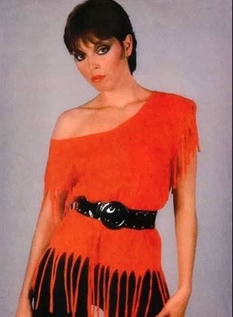
The rock scene was an open playing field for women in the ‘80s—whether it was quirky pop songbirds like Cyndi Lauper; androgynous avant-garde sirens like Grace Jones and The Eurythmics’ Annie Lennox; new wave divas like Berlin’s Terri Nunn; or the rising phoenix of the music world, Tina Turner (who experienced a resurgence of fame and musical success in her ‘40s during this decade)—if you were a female vocalist who wanted to rock, the world was your oyster.
In the ‘80s, women in music were (pun intended) taking life by the balls and going after what they wanted; not willing to be shy, ladylike damsels in distress. Women were pushing the envelope in the MTV era, when image was just as important as the music itself. Female rock vocalists were upping the ante by using looks to their benefit: whether it was capitalizing on their sex appeal, dressing in outlandish garb or dyeing their hair in bright, crazy colors; women could further express themselves by crafting an onstage identity to embody their creative vision. To be played on MTV, males and females alike had to learn the art of selling their faces and bodies as well as their voices and talent; so for the first time, it was acceptable for women to take advantage of their appearance by using it as a tool of empowerment. However, as emphasis shifted more to looks than to music, this backfired horribly for many female artists; putting them in a catch-22 that forced them to compromise their musical integrity in favor of a façade that sold records, but was far removed from their real-life personalities and true artistic spirit.
Everyone immediately looks to Madonna as an icon of this particular movement during the time, but there were other women who were walking the walk and talking the talk. One rock frontwoman that an argument could be made for in the evolution of femme-metal is the late Plasmatics frontwoman Wendy O. Williams, who was hailed as the “Queen of Shock Rock”, and lived up to that reputation in her stage shows. Whether it was simulating sex onstage, blowing up props during live shows, or crashing cars in their music videos, Wendy was continuously testing the boundaries of what was considered acceptable in the conservative Reagan era. Collaborating with Mötorhead mastermind Lemmy Kilmister, Wendy O. Williams breached the worlds of punk rock and metal. While she may not exactly be considered a metal frontwoman, a strong case could be made that this merger was a pivotal moment in the evolution of femme-metal.
In fact, it was metal frontmen like Lemmy who may well be considered responsible in many ways for opening the door for women to enter the world of metal. Lemmy was not afraid to take chances on women who wanted to play metal music during a time when women in rock were still somewhat considered a novelty; so women in metal were practically unheard of. Not only did Lemmy collaborate with Wendy O. Williams, but the all-female English metal band Girlschool was highly respected by Lemmy, and can attribute much of their early success to his support of their music. Another metal god who was known for being an early mentor to many of the fledgling femme-metal bands was the late Ronnie James Dio, who took acts like Doro on tour with him in the early days of her career, and would tour together numerous times until his death in 2010. Chastain frontwoman Leather Leone also considered Ronnie a mentor and continues to express her gratitude for his guidance to this day.

For the most part, metal was considered an exclusive “boys’ club”, but women began to bust down the doors and infiltrate themselves into the tightly-knit brotherhood. It was here where you will find the definitive “foremothers” of femme-metal; the first artists that identified themselves as metal musicians and played heavy metal. Whether it was the glossy, polished sound of Vixen or Lita Ford (whom, after The Runaways had disbanded, embarked on a successful solo career as a metal artist which still continues to this day); or the grittier “true metal” stylings of Doro Pesch, Leather Leone, or Betsy Bitch, women were making their way into the fold, determined to stake their claim with their feet firmly planted and their fists in the air. Women had been working for the past 3 decades to show that they could command an audience as well as men; now they were in a position to prove it.
It is also important to point out that it was during the ‘80s that another merger took place that could quite possibly be considered among the first attempt at merging the worlds of classical and rock music. Known for incorporating operatic themes into their music since their inception in the ‘70s, the rock band Queen was notably the first band to try their hand at bringing a classical sound to rock music. But it was not until the late ‘80s when iconic Queen vocalist Freddie Mercury met with the Spanish opera vocalist Montserrat Caballé that the true fusion of the two worlds began. With their album Barcelona, Montserrat’s soprano vocals coupled with Freddie’s bombastic stage presence set to classically-infused rock music was like nothing anyone had ever heard before. While it took time for that sound to catch on, it was clear that Freddie Mercury and Montserrat Caballé had started something that the world didn’t know they were ready for until they heard it, and realized it could be done. Unfortunately, Freddie would not live to see the fruits of what this musical experiment had caused; but he had accomplished something in the music world before he left far too early: before long, the concept of opera and rock being bedfellows would not seem too strange, and fans from either genre would slowly but surely reach out their hands to each other, and isn’t that what music is all about?
As the ‘90s dawned, metal was dealt a crippling blow when grunge and alternative rock began to dominate the airwaves. Established metal superstars were finding it hard to sell albums or generate ticket sales, so it was even more difficult for up-and-coming acts to be taken seriously. The glammed-up images of the metal bands now appeared silly and cartoonish next to the stripped-down, no-frills look of the flannel-wearing grunge rockers. In the “politically correct” 1990s, when females in rock were all about bringing back the rebellious feminism of the ‘70s punk movement, there was no room for the scantily-clad, suggestive theatrics that were common in both male and female-fronted metal bands from the ‘80s.

The few bands left in the U.S. that were still waving the metal flag were ultimately fighting a losing battle; for newer bands, the chance to be heard and noticed was next to impossible. Los Angeles-based all-female metal band Phantom Blue came along in the late ‘80s and was ahead of their time with tongue-in-cheek lyrical content that gave humorous insight into the female perspective that had previously not been touched upon before. They made as honest an attempt as any to keep metal alive and relevant for fans in the U.S.; but just like every other band on the scene during the early to mid-‘90s, they found greater success with European audiences. The ladies even joked in a 1994 interview with Los Angeles metal radio station KNAC that they didn’t know what audiences were like anyplace other than Los Angeles or Europe, because they had never played anywhere else. Sadly, their rising star was extinguished far too soon, swallowed up in the tidal wave of grunge; the untimely death of guitarist Michelle Meldrum over a decade after their disbanding would forever end any hope of a Phantom Blue reunion happening someday. Though they were barely a blip on the screen in the overall grand scheme of things, they are important to the evolution of femme-metal for reasons that will become clearer as we return to the U.S. femme-metal scene later in this article.
Because metal was all but extinct on the American music scene in the ‘90s, many metal bands caved in to the pressure and attempted in vain to change their sound to try and stay relevant. Still others broke up, went on extended hiatus, embarked on solo careers, or took their act to Europe or Japan, where they still sold concert tickets and could still release chart-topping albums. It was during this period of metal hibernation where femme-metal grew unobtrusively in the shadows, springing full-grown seemingly out of nowhere by the turn of the century.
It was in Europe where these bands were formed; the bands that are recognized as the originators of today’s femme-metal scene. Who the first of these bands were is often debated, but it is clear that the formation of bands such as The Gathering, Closterkeller, The 3rd and the Mortal, Trail of Tears, and Theatre of Tragedy are considered to be among the first of them. Theatre of Tragedy’s Liv Kristine and The Gathering’s Anneke van Giersbergen are frequently mentioned as being an influence among numerous femme-metal vocalists; both have gone on to experience successful solo careers, and both are still highly respected and emulated by fans and fellow bands in the genre alike.

The bands that would irrefutably be associated with this scene and the bands that most people identify with modern-day femme-metal were still in its infant stages: Lacuna Coil was among the first of those, forming in Milan, Italy in 1995. The following year, two bands that are considered to be the icons of this movement would develop in two separate European countries: Finland’s Nightwish, and Dutch-based Within Temptation. Despite being from two entirely different countries, they both cultivated a sound that would in time be labeled as “opera-metal”, or more commonly, “symphonic metal”. Although Lacuna Coil was never considered symphonic metal, they were among that handful of femme-metal bands that experienced massive success outside the borders of their home country, and were among the first of these bands to legitimately break through to the American market and have enjoyed a certain level of success there that some of their contemporaries still have yet to experience.
Something was happening in Europe during those last few years of the 20th century…something big, and something that none of these bands could have possibly imagined would be so impactful, or predicted would spread so far and wide. The cocooned sleeping giant of metal was slowly stirring, ready to emerge in a new form.
The developments during the ‘90s brought about a number of evolutionary themes that changed the face of femme-metal forever. The Dutch contributions brought about a vocal theme that altered the landscape towards a darker direction: besides Within Temptation, there was After Forever, Nemesea, and later on, Epica and Stream of Passion. The Poles went even darker with bands like Artrosis, Moonlight, Delight, Darzamat and Batalion D’Amour. But, maybe the biggest changes came from the unknown band from Finland. Nightwish originally started out with an acoustic sound, one that made use of classically trained musicians. However, when Nightwish composer Tuomas Holopainen realized that mezzo-soprano vocalist Tarja Turunen’s voice was too strong for the mellow acoustic theme they were trying to capture, he decided to shift the music to a heavier direction. That change became the most profound of all. Tarja Turunen’s vocal contributions single-handedly forged a new path in the metal genre that would be replicated by countless bands from then on.

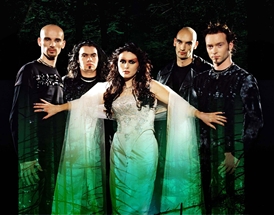
Nightwish, through a series of critically acclaimed releases, introduced both the operatic vocal and, arguably, the symphonic instrumental component that has become an integral part of the genre. Back in The Netherlands, Within Temptation was also making headway with their own style of symphonic, classically-trained, Celtic-inspired metal sensibility. Both bands continued to perfect their craft in their respective countries, each one garnering respect from the other’s fanbase to the point where being a Nightwish fan almost always meant being a Within Temptation fan, and vice-versa. Although Nightwish has surpassed Within Temptation in prolificacy, Within Temptation has made “quality, not quantity” their mantra. While releasing fewer albums than their colleagues on the scene, Within Temptation’s strongly loyal fanbase has kept them relevant and permitted them to achieve growing success even when they went several years between albums. Both Nightwish’s Oceanborn and Within Temptation’s Mother Earth are regarded by fans and by fellow musicians on the scene to be two of the most influential albums of this genre and can certainly be pinpointed as the definitive works that classify the genre.
This particular brand of metal spread like wildfire, and a crop of bands looking to incorporate dark gothic themes and operatic stylings into heavy metal were emerging from all corners of Europe. At first the movement started in the Western European countries, but slowly moved outward to Eastern Europe, and as far out as South America and parts of Asia. By the early 2000s, femme-metal could no longer be called a fluke or a fad; it was a bona-fide movement. Norway was getting in on the action with bands like Tristania and Sins of Thy Beloved; Brazil had some operatic metal bands of their own with the short-lived Pettalom and Venin Noir. Even Taiwan brought their take on symphonic metal to the table with the band Seraphim. While all these bands were emerging from various parts of the world, the American music scene was absolutely silent, or completely oblivious to what was going on everywhere else. That was all about to change.
Up to the turn of the millennium, femme-metal in North America was fairly nonexistent: limited to the nu-metal bands that were popular in mainstream music during that time, such as the Canadian all-female band Kittie; or the female-fronted bands were oftentimes fun, upbeat throwbacks to earlier sounds, such as the all-female American group, The Donnas. It appeared that the symphonic metal scene had completely passed the continent by; if there were fans of bands like Lacuna Coil or Nightwish in the United States, they were few and far between. While Nightwish had performed in Canada and Within Temptation had toured Mexico for the first time during this period, neither had yet to make a dent in the U.S. music scene. Lacuna Coil had briefly visited the U.S. opening for doom-metal band Moonspell in 2001, but so far, the femme-metal scene in Europe was meeting a deaf ear among American listeners.
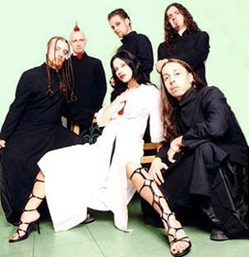
The year 2003 was a huge turning point for the femme-metal scene as a whole, but especially in regards to breaking through to American shores. As Lacuna Coil started to gain some popularity on the American market with their acclaimed 2002 album Comalies, they were completely blind-sided by the sudden emergence of a gothic-rock band from Little Rock, Arkansas called Evanescence. In fact, these two bands were often mistaken for each other when they both first started gaining popularity in the United States; so much that Lacuna Coil actually had to release a statement on their website to clarify that they did not have a song called “Bring me to Life”. So while Evanescence was markedly the first American band to incorporate these symphonic elements into their music, the way in which they burst onto the scene has caused a divide among femme-metal listeners: those who had been following this genre for a long time, and felt that Evanescence was piggy-backing on the hard work that the European bands had already done; and those who discovered the genre by way of Evanescence and felt that they played a big part in getting the European bands over to America and enabling them to find their own success there.
However, as the saying goes, the poison sometimes contains the antidote, and with Evanescence’s mainstream success in America, this allowed many of the bands who had been struggling to get their foot in the door in the American market to finally be recognized and to prove to record labels and tour promoters that their music could have an audience in America. In 2003, a huge turning point that validated this argument was when Nightwish set foot on U.S. soil for the first time to play the ProgPower festival in Atlanta, Georgia. Fans that had been hiding in the woodworks suddenly came forward to attend the festival from all corners of the fifty states, showing that Nightwish was welcomed with open arms and their American fans had been awaiting them for a long time. The demand for them to come back and do a full U.S. tour was outstanding.
As a result of the “Evanescence factor”, the mid-‘00s was a prosperous time for the femme-metal scene. With the release of the Nightwish album Once and Within Temptation’s The Silent Force in 2004, the music saw a shift to a more polished sound while incorporating even more orchestral elements. The songs were more radio-friendly, yet even more powerful and grandiose at the same time. This change in style caused another transformation on the scene, as bands like Delain from The Netherlands adopted these symphonic elements, while also incorporating a more accessible sound with catchy tunes set to a backdrop of an orchestral sound. The operatic vocals were being pared down, which meant that vocalists with more of a rock, soul, or pop sensibility could also take part and bring their particular flair to the genre. Longtime fans of the scene feared that the success of Evanescence was causing the European bands to “sell out” in the hopes of grabbing a little of the brass ring. Bands who had been on the fringe of the early days of the movement were also changing their sound to accommodate more of a rock-based audience; the Italian gothic band Macbeth moved away from their earlier symphonic-goth tendencies and shifted more towards the gothic-rock style that Lacuna Coil had begun to embrace. Nemesea had changed their sound to a more pop direction. The German band Flowing Tears abandoned their dark, gothic roots with epic 10-minute songs, acquired a new female vocalist, and also strived for a more streamlined musical direction. After Forever had disbanded and frontwoman Floor Jansen’s new band ReVamp was clearly going in a darker, heavier musical direction.
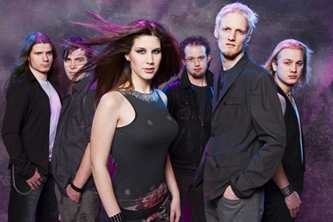
However, whenever a genre changes drastically, there are always those small corners of the scene that go to even greater extremes with the initial sound. The most notable of these bands is the Dutch symphonic metal band Epica, who brought the operatic vocals even more to the forefront at a time when their influences in the genre were relying less on the operatic vocals and more on the power of an orchestra. Bands like Sweden’s Diablo Swing Orchestra were keeping the operatic vocals while dabbling in experimentation with musical styles that had not previously been associated with metal, such as swing music or Latin-based rhythms. Bands like Ireland’s Cruachan, or Finland’s Battlelore chose to adopt more of the operatic storytelling in their sound as opposed to the vocal delivery: Cruachan writing lyrics pertaining to Irish history and lore, while Battlelore’s lyrical content was entirely based on the works of fantasy literature’s founding father, J.R.R. Tolkien. So while the iconic bands on the scene were becoming more accessible to wider audiences, there were still bands rising up that wanted to remain true to the roots of this genre, while daring themselves to push musical boundaries and shatter stereotypes of what exactly “symphonic metal” was supposed to be.
Another way the scene was moving into an opposite direction was also by way of how female vocals were presented in a metal context. By the late ‘00s, the “sweet, fairy princess” voices became so conventional that it was almost a stigma. Although bands like Holy Moses and Astarte featured guttural female vocalists as far back as the ‘80s, the sound didn’t really take off until the late ‘90s/early 2000s, when bands like Italy’s Cadaveria, or the Swedish/German Arch Enemy were at the forefront of the femme-metal scene that involved harsh, guttural vocals; the kind that had been heard mostly by males in death-metal bands. Since the early 2000s, Arch Enemy frontwoman Angela Gossow was something like no one had heard before; her brutal growls and quintessential “don’t give a fuck” metal attitude led the way for females in metal music to take another approach, and to show that you didn’t have to take courses in classical music or sound like a Tori Amos clone in order to join a metal band. This opened the door for bands like Russia’s Dehydrated, Otep and In This Moment in the U.S., France’s Dylath-Leen, Sinister in The Netherlands, and Canada’s The Agonist; the latter of which their frontwoman, Alissa White-Gluz, would go on to replace Angela Gossow in Arch Enemy upon her retirement, bringing the scene full circle.

And that vocal component has been augmented by a focus on choral work with a number of sounds. And that component has expanded over time. Morten Veland was one of the first to include this component, often utilizing Latin lyrics for the choir. Many bands have copied that theme. However, bands like Whyzdom seem to favor the ancient Greek. Doesn’t matter, choral elements have become a staple for many of the top sounds, in a variety of languages. Blackthorn utilizes classical choral elements, from a top Conservatory of Music in Moscow, others use something less. Mutum, a Mexican band, utilizes a choral group and technology to provide a sound that approximates hundreds. There seem to be no limits.
Currently in the U.S., symphonic metal still has a stronghold on the femme-metal scene with the inception of bands like Arizona’s Insatia or Minnesota’s Heliosaga; but America is a melting pot, and just as in the country’s culture, the U.S. is incorporating other musical styles into the growing femme-metal scene. Likewise, mainstream American sounds have found their way into the sensibility of some of the European bands; Italy’s Godyva has experimented with the concept of hip-hop mixed with metal with some success; a sound that has also been perfected by Straight Line Stitch from the United States. Bands such as California’s Kranken Welpen are creating a style of their own that can be branded as “Oktoberfest metal” with the juxtaposition of the cheery sounds of polka coupled with the aggressiveness of metal. Solo artists like Seraphim Ward are drawing from the sounds of electronica and goth to create a new genre called “vampire metal”; not only writing music but creating movies to widen her artistic landscape. The influence of frontwomen like Doro and Leather Leone, and the groundwork that was laid down by bands like Phantom Blue have generated a new movement on the U.S. femme-metal scene that could almost be called a “return to form” to metal’s roots, where straight-up rock vocals are experiencing a rebirth; but now with powerful metal anthems written from a woman’s perspective. The Pennsylvania-based band Halestorm is at the vanguard of this movement; their songs reminiscent of ‘70s and ‘80s hard rock, with frontwoman Lizzy Hale bringing back the straight-up rock vocals of icons like Pat Benatar and Ann Wilson. Meanwhile, vocalists such as Veronica Freeman of Benedictum and Nina Osegueda of A Sound of Thunder have moved completely away from the operatic/angelic vocals of their femme-metal contemporaries and have chosen to go back to more traditional metal by putting their spin on the vocal stylings of metal legends such as Rob Halford or Ronnie James Dio. It is that crossover to other styles can probably be an evolution of which we can expect more to come.

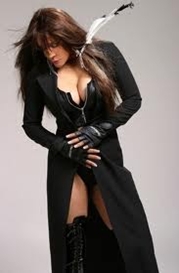
Another significant development is in the use of technology to provide access. It’s no longer necessary for bands to work together. Bands like Hugo Flores’ Factory of Dreams, Arjen Lucassen’s Aryeon, and Argentina’s Beto Vasquez work with singers and musicians they never actually see. They develop a concept, provide a framework and send it out to friends. Doesn’t matter whether Tarja is in the neighborhood, she has e-mail and just sends it in. There’s no limit to who you can get to perform, everyone has e-mail and access to a recording studio. One particular female who has mastered this form of music collaboration is Gaby Koss, who has worked with numerous bands and musicians, often without ever meeting them eye to eye. Gaby works in multiple frameworks: she does Renaissance material, she works with everyone from Mexico to Russia; each with a different focus, and she headlines other material. Floor Jansen has also become another “in-demand” vocalist on the scene: not only is she now the current Nightwish frontwoman as well as keeping her own band ReVamp, but Floor has collaborated with superstars on the metal scene such as Arjen Lucassen and former Stratovarius mastermind Timo Tolkki; as well as guest-performing onstage with metal bands like Kamelot and Soilwork. Top-notch female vocalists are in demand throughout the genre and contribute in a variety of ways. If you have a voice like Gaby or like Floor, someone’s always interested. But the technology has contributed in other ways. Many of the top bands from around the world are technology driven in terms of how they develop their music. They make use of software packages ranging from less sophisticated packages like Apple’s Garageband to the top of the line, products like East / West. Products like this provide a musician with access to sounds that mimic an entire symphony orchestra and choral elements. Of course, not everyone has access to the top line products, but, we are beginning to become familiar with artists who can make lesser products sound almost as good. At the top of the line, of course, a few bands, Nightwish, Therion, etc. actually use full orchestras and choirs. But, this is becoming less and less a requirement. The software is that good.
Lyrically, there have been a number of new directions that have come to define the music. In Eastern Europe, the darker sounds have become more pronounced. Bands like Russia’s Blackthorn revel in the darker constructs of Witchcraft. Others take a more Gothic direction, sometimes as dark as the darkest we ever got from Norway with the Morten Veland material. But, some have gone in other directions. Several Russian bands have explored themes as divergent as Science Fiction and Historical Paganism. Ukrainian bands seem to favor even darker directions at times. In South America, there are a range of themes, some focusing on the mystical and related topics. Bands like Aggelos from Colombia have actually combined Christianity and the Gothic into some of the most interesting music ever recorded.
The scene was branching out in many different directions, almost to where femme-metal was a self-contained genre in itself. If you were a fan of female vocals and also a fan of metal, there were so many different bands in so many different subgenres that you could literally listen to nothing but female vocalists in any of those subgenres if you wanted to. Some bands experimented with fusing metal together with other types of music besides the standard opera or classical music. Other bands chose to experiment with the vocals itself. Though the “beauty and the beast” vocal style has been so much a staple on the scene that it is hard to imagine femme-metal without it, some bands were taking it a step further and using this sort of vocalization between two female voices, as opposed to the “dueling” male and female; such as Germany’s Coronatus and Finland’s Evilion, to name some examples, had both an operatic female voice and a rock female voice. Other bands went for a fuller sound by bringing in choirs, such as the Swedish band Therion or France’s Whyzdom. Still others rounded out their sound with multiple male and female vocalists; such as Tristania, who added both a guttural and “clean” male vocalist to complement the operatic female voice. Other bands still managed to achieve a huge sound with a “less is more” approach, like England’s Sense of Creation, who has only two bandmembers.
In fact, the scene has expanded so much that there are musicians out there who technically could not even be considered metal, but still have a loyal following among a metal fanbase, due to incorporating their own musical style to well-known metal classics. Some examples of this are Germany’s Eklipse, a string quartet who performs classically-styled renditions of well-known pop, rock, and metal songs. Another example is The Harp Twins from the United States; identical twins who perform covers of everything from Iron Maiden and Metallica to television or movie theme songs, using nothing but electric and acoustic harps. The worlds of classical music and metal had merged so seamlessly that now they are almost interchangeable.
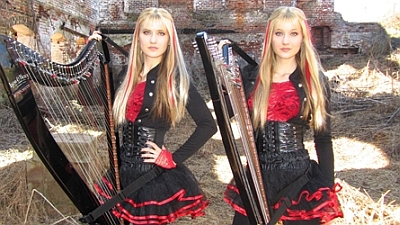
The initial symphonic metal scene is still evolving too, and still producing new talent that keep true to the early sounds of their predecessors. From Hungary’s Sorronia to Finland’s Severnica, the symphonic metal genre is still going strong and showing no signs of slowing down.
It’s anyone’s guess as to what direction the femme-metal evolution will take next. As the scene widens and becomes more accessible to more audiences, boundaries are breaking down, rules are being rewritten, and the bar is being raised. There seems to be no limits, and as we reach the midway point of the 21st century’s second decade, the femme-metal scene has exploded into an international phenomenon. Regions that one would not think even had a metal scene, let alone a femme-metal one, are coming to the forefront: bands like South Africa’s Terminatryx and Crimson Chrysalis; the latter of which provides some insight to thoughts, concepts and musical constructs that are clearly of interest to their geographical perspective.

The scene is also seeing a rush of younger musicians who are ready to get out there and take on the world and not willing to wait for adulthood to live their dream. Bands like Canada’s Motion Device (comprised completely of bandmembers all of high school age), or 16-year-old American rocker Gabbie Rae are making waves on the metal scene due to their impressive talent for being just teenagers. One can only imagine what kind of a force they will be once these gifted young ladies reach maturity.
And of course, the best part of watching something evolve is that whatever is to come next will be completely unexpected. No one could have foreseen the impact that Within Temptation and Nightwish would have on the music scene when they first started out in the late ‘90s. Likewise, no one could have ever predicted a Janis Joplin back in the ‘60s either. The next phase in femme-metal’s evolution is yet to be seen, but rest assured that somewhere, there is a young girl writing a song or picking up a microphone for the first time, and singing the songs that will shake up the scene once again. Stay tuned…
END
